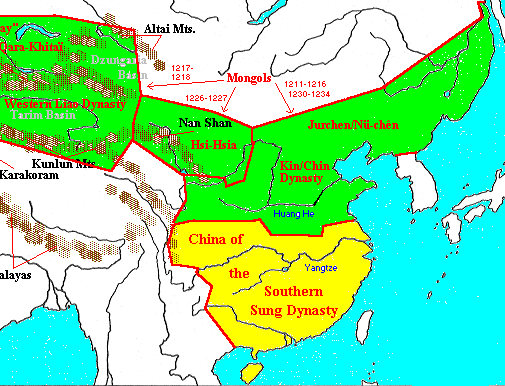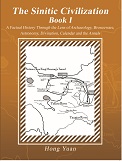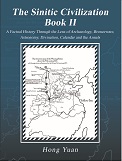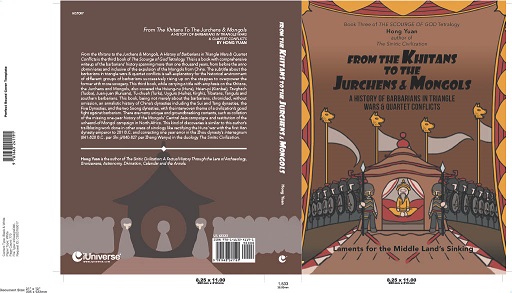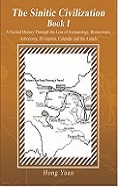
Sinitic Civilization-Book 1
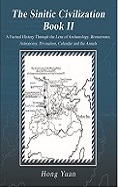
Sinitic Civilization-Book 2
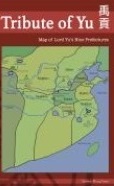
Tribute of Yu

Heavenly Questions
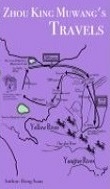
Zhou King Muwang's Travels
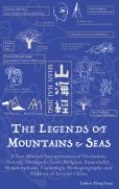
The Legends of Mountains & Seas
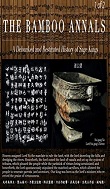
The Bamboo Annals - Book 1
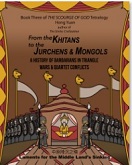
The Scourge-of-God-Tetralogy:
From the Khitans to the Jurchens & Mongols: A History of Barbarians in Triangle Wars and Quartet Conflicts
(available at iUniverse;
Google;
Amazon;
B&N)
|
|
JURCHEN JIN DYNASTY
Matters related to Jurchens & Manchus would be covered in three sections: Jurchens & Manchurians section, this section on Jurchen Jin Dynasty, and Manchu Qing Dynasty section.
In the Jurchens & Manchurians section, we had traced the history of both early Jurchens and later Manchus. The "Anterior Jurchens" would be those who defeated the Khitans' Liao Dynasty
(A.D. 907-1125), and set up the Jin or Gold Dynasty (A.D. 1115-1234) that lasted 119-120 years in northern China. We used the same ethnic designation of 'Jurchen' here because Nurhachu would proclaim the founding of 'Da Jin', namely, Grand Gold Dynasty, in A.D. 1616, using the same dynastic name as 'Anterior Jurchens'. Later Jurchens renamed themselves Manchu and renamed their dynasty to 'Qing'. I coded the section name by jurchen.htm in order to avoid possible confusion in relation to Jin(4)character of Jinn Principality of Warring States time period or Jinn Dynasty.
The Founding Father of the Jurchens
History Of Jurchen Jin Dynasty recorded that the founding father of Jurchens had two more brothers. At age 60 plus, the second brother, by the name of Hanpu, left Koryo for Manchuria with his younger brother Baofuli. The elder brother, A'gunai, fond of Buddhism, told the two brothers that he could not leave Koryo because their descendants would for sure reunite here in Koryo.
Hanpu, at age above 60, went to live among the Wayan people, a Jurchen tribe in Manchuria.
After mediating over the feud of two neighboring tribes, Hanpu was given an old virgin woman for marriage. Two sons were born, Ulu and Wolu, plus a daughter called Zhusiban. Hanpu was posthumously entitled "shi-zu" or the beginning ancestor.
Son Wulu was posthumously entitled De-di (the virtue lord).
Wulu's son, Ba-hai, was posthumously entitled An-di (the peace lord).
Ba-hai's son, named Sui-ke, was posthumously entitled Xian-zu (the oblation ancestor).
At Sui-ke's times, there was no house in the Blackwater Tribe area. The barbarians lived in caves dug out of hill, with beams supporting the ceiling. In the summer times, the barbarians moved with the herds to graze the new grass. After Sui-ke moved to Haigushui, the Jurchens began to build fixed dwellings, called by Nageli which meant residence in Chinese.
Sui-ke's son, called Shilu, first started to erect rules and creeds in reforming the raw Jurchens' customs of lawlessness as a result of lack of written language and contracts.
Shilu was posthumously entitled Shao-zu (the shining ancestor).
Shi-lu's son, called Wugunai, was born in A.D. 1021 (the first year of Khitan Liao's Taiping Era).
Wugunai was the sixth generation tribal chieftain for the Jurchens.
Wugunai was posthumously entitled Jing-zu (the bright ancestor).
Wugunai first started the Jurchen expansion by taking control of various tribes including Baishan (white mountain), Yehui, Tongmen, Yelai and Tugulun etc.
To prevent the Khitans from penetrating into the Jurchen land, Wugunai often rounded up the convicts and refugees from the Khitan territory, including the Tiele [Turkic] tribesmen etc., for handover to the Khitans.
The Khitan emperor received Wugunai at the Liao palace and conferred him the post of "jie-du-shi" (satrap) for the raw Jurchen tribes.
However Wugunai put off accepting the satrap seal.
The Jurchens under Wugunai then used the Liao conferral to set up the governance system, and the Jurchens, who did not have iron, began to buy iron shields from the neighboring country.
Wugunai's second son, who was born in A.D. 1039 (the 8th year of Khitan Liao's Chongxi Era) and posthumously entitled Shi-zu (the dynastic ancestor),
inherited the satrap conferral from the Khitans.
Shi-zu (the dynastic ancestor), at age 54, died in A.D. 1092 (the 8th year of Khitan Liao's Da'an Era) after a reign of 19 years.
The 4th son succeeded the 2nd son as Su-zong (the serious lord, born A.D. 1042).
Su-zong, when seeing the Khitan emperor, often misled the interpreter so that he could be asked to move close to the imperial seat to talk to the Khitan emperor direct.
The 5th son succeeded the 4th son as Mu-zong (the solemn lord, born A.D. 1053).
Mu-zong often played against the various Jurchen tribes to win favor from the Khitans.
In the 9th year reign, Mu-zong paid a pilgrimage to the Khitan emperor at Yusuo.
In the 10th year reign, Koryo first sent an emissary to the Jurchens.
Mu-zong passed the reign to the son of Shi-zu (dynastic lord) after death.
This would be Kang-zong (the prosperous lord, born A.D.1061).
During the 4th year reign, the Jurchens and the Koryo began to have military conflicts over the reciprocal repatriation of refugees.
During the 11th year reign, Kang-zong died at age 53.
The succeeding Jurchen ruler, Taizu [the grand ancestor, born A.D. 1068], Wanyan Min (Aguda), was the 2nd son of Shi-zu [dynastic lord].
Wanyan Min (Aguda) first challenged the Khitan rule by building castles.
When the Khitans sent Xiao-da-buye to Ningjiang-zhou with an army, the Jurchens countered by assembling the Jurchen tribes to form an army.
Aguda sent emissary to the Bohai domain, pacifying them by a claim that the Jurchens and the Bohai people were of the same family.
After defeating the Khitans,
Taizu declared himself an emperor, the dynastic name of Da-jin [grand gold] to counter the Khitan dynastic embodiment of iron, and the era of Shouguo in A.D. 1115.
Soong China's Games Of Triangular Warfare
For hundreds of years, the Soong Dynasty, built on top of Northern Zhou (A.D. 951-960) of the Chai(1) family, would be engaged in the games of 'three kingdom' kind of warfars. Northern Soong (A.D. 960-1127) would face off with the Western Xia (A.D. 1032-1227) and Khitan Liao in a triangle, and then played the card of allying with the Jurchens in destroying the Khitan Liao. With Northern Soong defeated by the Jurchens thereafter, Southern Soong (A.D. 1127-1279) would be engaged in another triangle game, with the other players being Western Xia and the Jurchen Jin. Southern Soong would then play the card of allying with the Mongols in destroying Jurchen Jin, and it even sent tens of thousands of carts of grain to the Mongol army in the besieging of the last Jurchen stronghold. Soon after that, the Southern Soong generals broke the agreement with the Mongols and they shortly took over the so-called three old capitals of Kaifeng, Luoyang and Chang'an. But they could not hold on to any of the three because what they had occupied had been empty cities after years of warfare between the Jurchens and Mongols. Thereafter, wars with Mongols ensue, ending in the demise of Southern Soong Dynasty when last emperor was taken to the sea waves by Lu Xiufu.
 The Scourges-of-God Tetralogy
would be divided into four volumes covering
Hsiung-nu (Huns), Hsien-pi (Xianbei), Tavghach
(Tuoba), Juan-juan (Ruruans), Avars, Tu-chueh (Turks), Uygurs (Huihe), Khitans, Kirghiz, Tibetans, Tanguts, Jurchens, Mongols and Manchus and
southern barbarians.
Book I of the tetralogy would extract the contents on the Huns from
The Sinitic Civilization-Book II,
which rectified the Han dynasty founder-emperor's war with the Huns on mount Baideng-shan to A.D. 201 in observance of the Qin-Han dynasties' Zhuanxu-li calendar.
Book II of the Tetralogy would cover the Turks and Uygurs.
And
Book IV would be about the Manchu conquest of China.
The Scourges-of-God Tetralogy
would be divided into four volumes covering
Hsiung-nu (Huns), Hsien-pi (Xianbei), Tavghach
(Tuoba), Juan-juan (Ruruans), Avars, Tu-chueh (Turks), Uygurs (Huihe), Khitans, Kirghiz, Tibetans, Tanguts, Jurchens, Mongols and Manchus and
southern barbarians.
Book I of the tetralogy would extract the contents on the Huns from
The Sinitic Civilization-Book II,
which rectified the Han dynasty founder-emperor's war with the Huns on mount Baideng-shan to A.D. 201 in observance of the Qin-Han dynasties' Zhuanxu-li calendar.
Book II of the Tetralogy would cover the Turks and Uygurs.
And
Book IV would be about the Manchu conquest of China.
From the Khitans to the Jurchens & Mongols: A History of Barbarians in Triangle Wars and Quartet Conflicts
, i.e., Book III of
the Scourge-of-God-Tetralogy,
focused on the Khitans, Jurchens and Mongols, as well as provided the annalistic history on the Sui and Tang dynasties, the
Five Dynasties & Ten Kingdoms, and the two Soong dynasties.
Similar to this webmaster' trailblazing work in rectifying the Han dynasty founder-emperor's war with the Huns to 201 B.C. in The Sinitic Civilization - Book II,
this Book III of the Scourge-of-God-Tetralogy
collated
the missing one-year history of the Mongols' Central Asia campaigns and restituted the
unheard-of Mongol campaign in North Africa.
|
The Scourges of God: A Debunked History of the Barbarians" - available at iUniverse|Google|Amazon|B&N
From the Khitans to the Jurchens & Mongols: A History of Barbarians in Triangle Wars and Quartet Conflicts
(The Barbarians' Tetralogy - Book III)
Epigraph,
Preface,
Introduction,
Table of Contents,
Afterword,
Bibliography,
References,
Index
|
|
Table of Contents
(From the Khitans to the Jurchens & Mongols: A History of Barbarians in Triangle Wars and Quartet Conflicts)
Chapter XVI: The Jurchens ................................................................291
The [Misnomer] Dong-yi (Eastern Yi) Barbarians: Sushen-shi,
Gu-zhu, Ji-zi Chaoxian (Korea) , âMoâ, âHuiâ, Eastern Hu (Donghu)
Barbarians (Wuhuan & Xianbei) .........................293
The Eastern Hu Barbarians & Successors: Shi-wei, Khitans, Wuji, Mohe, Bohai
(Parhae) & Nüzhen (Nüzhi, i.e., the Jurchens) ............297
Founding Father of the Jurchens ...........................................................299
The Jurchens' Rebellion against the Khitans ..........................................300
Chapter XVIII: The Mongol Attacks on the Jurchens..............................316
The Jurchens Expanding the Construction of the Great Walls on the Steppe ...316
The Mongols' First-Stage Campaign against the Jurchen Jin Dynasty
(Battle of Yehuling, A.D. 1211) ..............318
The Mongols' Second-Stage Campaign against the Jurchen Jin Dynasty (A.D. 1213) .327
Fall of the Jurchen Jin Capital City Zhongdu (A.D. 1215) ........................333
Chapter XIX: The Jurchen Jin's Triangle & Quartet Wars ........................337
The Jurchens' Two-Front Wars with the Tanguts & Mongols .....................340
The Jurchens Launching a Third Battlefront against Southern Soong ...........345
Southern Soong's Taking the Shan-dong & He-bei Territory from the Mongols &
Jurchens ..347
The Jurchens' Conferral of Nine Dukes as Feudatories against the Mongols ....352
Southern Soong's Northern Campaign against the Mongols & Jurchens ........357
The Mongols' Attacking the Jurchen & Soong's Western Territories after
Elimination of the Tangut Xia Dynasty ....360
Chapter XXV: Demise of the Jurchen Jin Dynasty (A.D. 1115-1234) ............458
The Mongols' Campaigns against Dong-Xia (Eastern Jurchen) & Koryo ........458
Ogedei Khan's Campaign against the Jurchens South of the Yellow River .......459
The Sanfengshan Battle (January of A.D. 1232) ............................................ 461
The Mongol Siege of the Jurchen Bian-jing Capital city (February-April of
A.D. 1232) .....466
The Battle of Gui'de (May of A.D. 1233) .......................................................468
The Jurchen Jin Dynasty's Demise at Caizhou (January of A.D. 1234) .............473
|
|
Mongols Attacks On the Jurchens
The Jurchens, ancestors of the later Manchu, had in early days defeated the Khitans (Kitans) in a seven-year war (A.D. 1115-1122) by means of an alliance with Northern Soong (A.D. 960-1127). The son of defeated Kitan Liao ruler fled with the small remnant of his army to the Tarim Basin where he allied himself with the Huihe (Uygurs or Uighurs) and established the Karakitai statelet (Western Liao Dynasty, A.D. 1124-1234). They subdued neighboring Koryo (Korea) in A.D. 1126 and invaded Soong China. They founded the Jin or Gold Dynasty (A.D. 1115-1234).
When Jurchens moved into northern China, the Shiwei and Mongolia territories were nominally controlled by the Jurchens via three major Jurchen vassals: the Naimans, the Keraits and the Tatars.
The Jurchens had fights with the early 'Mengwu' people (led by Kabul-khan) in 1139 and in 1147, and they nailed Ambaki and Kabul-khan's elder son to wooden donkeys and hence were feuds of Genghis Khan's Mongols.
The Tatars had assisted the early Jurchens in defeating the Mongol (Meng-ku) rebellions, handed over Mongol leader Ambakai (disputed to have adopted tribal name of Tayichi'ut) and his son to the Jurchens for execution in A.D. 1150s, and dealt the remaining Meng-ku tribes a decisive defeat near Lake Buir in A.D. 1160s.
Historical records quoted the Jurchen Jin Dynasty's history (compiled by Mongol Yuan's prime minister) as saying that the 'Mengwu' people had a rebellion led by Kabul-khan. It was said that after the migration of the Jurchens to north China, the Borjigin people (who derived from Mengwu Shiwei) had emerged in central Mongolia as the leading clan of a loose federation. Kabul Khan raided into Jurchen Jin in A.D. 1135 by taking advantage of Jurchen's southern campaign against Soong Chinese. Jurchen emperor, hearing of Mongol disturbance, called on Kabul Khan to the Jurchen capital. Kabul Khan, being drunken, did not show respect for the Jurchen emperor. When Jurchens dispatched emissaries to Kabul Khan twice for recalling him to the Jurchen capital, Kabul Khan killed the Jurchen emissaries. Then, Jurchens dispatched General Hu Shahu on a campaign against Kabul Khan. Jurchens were defeated by Kabul Khan. When Jin Emperor Xizong died, his grandson colluded with Jurchen Jin General Wuzu in killing an uncle called Dalai, and Dalai's descendants fled to Kabul-khan's Mengwu people for assistance in avenging on the new Jurchen emperor. This caused the Jurchens to abort their southern campaigns against the Chinese of Southern Soong Dynasty. Unable to fight the Menggu, the Jurchens negotiated a peace treaty with the Mengwu and moreover conferred Kabul-khan the title of king of the Mengwu people.
After the death of Kabul-khan, the 'Mengwu' people were commented to have disintegrated. Kabul-khan decreed that his brother, Ambaki, be the leader. The Mongols then had wars with the Tatar tribe. The Tatar tribe tricked Ambaki into an arrest via a proposition for an inter-marriage, and then sent both Ambaki and Kabul-khan's elder son to the Jurchens for execution.
(Wang Guowei believed that all records concerning the early Mongol-Jurchen wars, inside and outside China, such as M. le Baron C. D'Ohsson (1780-1855)'s Histoire des Mongoles, were all rooted in the two forgery books, i.e., Xing-cheng Lu and Zheng Meng Ji.
What actually happened was the continuing wars of the Jurchens versus the Khitans, the Da-da2 (including the Tatars and the later Mongols' cousin tribes from the 1130s to the 1190s.)
Kabul-khan's 4th son, Kaidu, would avenge on the Jurchens. Kaidu passed on the reign to the 3rd son of his brother, i.e., Yesugei. (Yisugei, Genghis Khan's father and Emperor Shenyuan posthumously, would be fifth generation of Kabul Khan, according to History of Yuan Dynasty.) Yesugei would avenge on the Tatar tribe and killed a chieftain by the name of Timuchin, a same name assigned to his son. Yesugei, who was chief of the Kiyat subclan of the Borjigin, was later poisoned by neighboring Tartars in A.D. 1175, when Genghis Khan (Timuchin or Temujin) was only twelve years old. Genghis Khan is like either 3 or 4 generations apart from Kabul-khan. The Kiyat people rejected Timuchin as their leader and chose one of Timuchin's kin, instead. Temujin and his immediate family were deserted even by Yisugei's brothers who went to Tayichi'ut clan. By the early 13th century, Genghis Khan would unite all Turko-Mongol tribes, including Kiyats, Tartars, Merkits, Keraits and Naimans.
In A.D. 1211, Jurchens conspired to attack the Mongols by building the castle of Wu-sa-bao, according to History of Yuan Dynasty. Genghis Khan ordered Chepe on an attack. Genghis Khan used to pay tributes to the Jurchens. When Jurchen Emperor Weishaowang (i.e., King of Weishao, Wanyan Yongji) enthroned in A.D. 1209, Genghis Khan refused to take Jurchen imperial decree by spitting in front of Jurchen emissary.
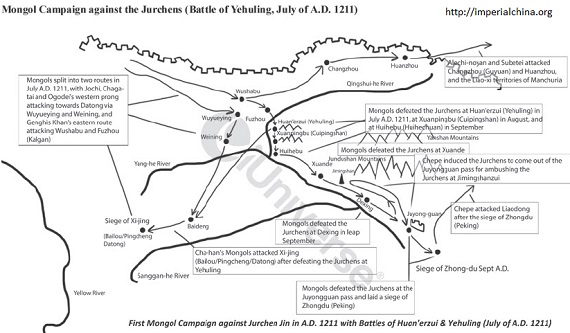
Mongol Campaign against the Jurchens (Battle of Yehuling, July of A.D. 1211)
Mongol Campaigns against Semiryechye & Central Asia (A.D. 1216-1219, 1219-1224)
Mongol Campaign against Kiev Rus (A.D. 1223)
Mongol Campaign against the Jurchens (A.D. 1231-1232)
Mongol Campaigns against the Volga Bulgars, Kipchaks, Alans, Rus Principalities, Crimea, Caucasus & Kiev Rus (A.D. 1237-1240)
Mongol Campaigns against Poland, Bohemia, Moravia, Hungary, Austria & Dalmatia (A.D. 1240-1242)
Mongol Campaign against Arsacia (Mulahida) from A.D. 1253 to A.D. 1256
Mongol Three-prong Campaign against Hezhou (Caaju) from late A.D. 1255 to early A.D. 1256
Mongol Continuous Campaigns in the Sichuan Basin (A.D.1257-1259)
Mongol Campaign against Hezhou (Caaju) & Diaoyucheng (A.D. 1257-1259)
Mongol Campaigns against the Abbasid Caliphate, Mecca, Misr (Egypt) Outposts, North Africa, and the Ayyubid & Mamluk Sultanates (A.D. 1257-1260)
|
|
In A.D. 1211, Genghis Khan held another khuriltai (assembly) at the River Kerulen. Arslan-khan of the Karluks came to surrender to the Mongols, and Wei-wu-er (Uygur) chieftain came to show respect, too. In February 1211, Genghis Khan defeated Jurchen General Ding Xue at Yehuling Ridge (wild fox ridge), and in July, Chepe took over the castle of Wu-sa-bao. In August, Mongols defeated Jurchens at Xuanping.
Wanyan Yongji was the nephew of late Jurchen Emperor Xizong. (Between Xizong and Wanyan Yongji, there had elapsed three Jurchen emperors, Feidi, Shizong and Zhuangzong, and one usurper, Hailingwang.) Genghis Khan led three sons and Jebe on a campaign against northwestern territories of Jurchen Jin and defeated a Jurchen General Hu Shahu. Jurchen Emperor Wanyan Yongji then sent Wanyan Jiujian and 400,000 strong relief to counter the Mongols. One Jurchen general, by the name of Ming'an, proposed that Jurchen army should take defensive action, but he was rebutted. When Ming'an was asked to reprimand the Mongols as an emissary, Ming'an surrendered to Genghis Khan and disclosed the military information. On the ensuing night, Genghis Khan raided the Jurchen camp and defeated them.
Siege of Zhongdu (Beijing)
In Sept, Dexing governor office was taken, and Juyongguan Pass was deserted.
Jebe (Chepe or Zhebie), with aid from the Khitans and Chinese who served in Jurchen armies, took over Juyongguan Pass of the Great Wall (near Beijing). Chepe went on to lay siege of Peking (Zhongdu). In the winter times, Mongols attacked Jurchen's ranch, and Yelü A'mei surrendered. Jochi, Chagatai and Ogodai took over numerous prefectures of northern China.
Mongols, after attacking Peking for 24 hours, failed to enter the city. Genghis Khan retreated back to Juyongguan Pass. In A.D. 1211, Genghis rested at the northern Jurchen territories.
In A.D. 1212, a Khitan who served as a Jurchen general, Yelü Liuge, took over east Liaoning Province and sent an emissary to Genghis Khan, expressing wish to be a vassal. Genghis Khan took over more Jurchen cities in southern Manchuria. Genghis Khan defeated a Jurchen relief army of 300,000 led by Heshilieqiujin. In autumn of A.D. 1212, Genghis Khan laid a siege of Jurchen's Xijing (west capital) and destroyed Jurchen relief army at Migukou. While attacking Jurchen's Xijing (west capital) city, Genghis Khan was wounded by an erratic arrow. Hence, Genghis Khan retreated. But in September and Dec, Mongols continued their attacks in Manchuria.
In A.D. 1213, Yelü Liuge declared himself King of Liao and the Era of Yuantong. In July, Mongols took over Xuande governor office, and Tolui took over Dexing governor office. At Huailai, near Peking, Genghis Khan defeated Jurchen governor ('xing sheng') Wanyan Gang and marshal Gao Qi. Jurchens retreated to Juyongguan Pass. Genghis Khan then attacked Zhuoluo of Hebei Prov, and Jurchen General Hu Shahu deserted so-called Xijing (west capital). Genghis Khan, marching out of Zijingguan Pass, would take over Zhuozhou Prefecture. When a Khitan general surrendered the Beikou city, Chepe would capture Juyongguan Pass thereafter.
In August of this year, Jurchen Emperor (Wanyan Yongji) was usurped and killed by Jurchen General Hu Shahu. Wanyan Xun (King of Feng) was selected as Emperor Xuanzong. Genghis Khan led three columns against Jurchens again, with Jochi, Chagatai and Ogodai attacking Shanxi Prov along the Taihang Mountains in the west, and a brother (Ha-sa-er) attacking Liaoning Prov in the east. Genghis Khan and Tolui attacked Hebei Prov in the middle. Genghis Khan ordered Muhuali to attack Mizhou Prefecture whose people were slaughtered.
Many Khitans and Chinese joined the Mongolians to avenge on the Jurchens. This will include famous generals like Chinese brothers: Shi Tianni, Shi Tianxiang, Shi Tian'an and Shi Tianze etc. The Shi brothers were employed by Muhuali. Shi Tianni was conferred the title of 'wan hu' (10000 households).
In March of A.D. 1214, Genghis Khan stationed his armies north of Peking. An emissary was sent to Jurchen emperor for a ceasefire, and Jurchen emperor surrendered Wanyan Yongji's daughter (Princess Qiguo), 500 boys and girls, and 3000 horses to Genghis Khan. Jurchen emperor ordered that his prime minister Wanyan Fuxing accompany Genghis Khan out of Juyong Pass.
In May, Jurchen emperor, however, made a strategic mistake by relocating his capital to Bianliang (today's Kaifeng), which essentially enraged Genghis Khan as well as cut themselves from the Jurchen base in Manchuria. Wanyan Fuxing was ordered to assist Prince Wanyan Shouzhong at Beijing.
Fall of Zhongdu (Beijing)
In A.D. 1213, Genghis Khan resumed warfare against the Jurchens. Using Jurchen's relocation as an excuse, Genghis Khan sent Muhuali against Jurchens. Muhuali attacked Jurchen's northern capital in west Liaoning Province at the advice of Shi Tianni. Shi Tianxiang was responsible for defeating 200,000 Jurchen army at the northern capital of 'Bei-jing'.
When Mongols returned to attack Beijing, Prince Wanyan Shouzhong fled to Bianliang in July. In Oct, Muhuali attacked Liaodong (east Liaoning Prov). A Jurchen general (Zhang Jing) at Jinzhou killed Jurchen 'jie-du-shi' (satrap or governor), declared himself King of Linghai, and then surrendered to the Mongols.
Siege of Zhongdu (Beijing) began in A.D. 1214.
Siege weaponry like mangonels and battering-rams would be utilized. Meantime, the Mongol armies devastated northern China, sacking numerous cities in Hebei/Shandong provinces, reducing them into ruins.
In A.D. 1215, Jurchen general at Tongzhou surrendered to the Mongols. When Muhuali attacked Bei-jing (north capital) in Feb, Jurchen generals Yin-da-hu and Wu-gu-lun surrendered. Jurchen marshal at 'xingzhong-fu' governor office also surrendered. In March, Jurchen relief army for Zhongdu (Beijing) was defeated at Ba-zhou Prefecture. In April, Qing-zhou and Shun-zhou were taken. Zhang Jing rebelled when being called upon, and rebellion was quelled. Zhang Jing's brother claimed to be Emperor Hanxing (reviving Han) at Jinzhou and declared the Xinglong Era.
In May, Wanyan Fuxing took poison to commit suicide, and Beijing fell to the Mongols.
By May of A.D. 1215, Beijing (known as Yanjing) fell, and history recorded the horrors of massacre and suicides. During the siege, the Mongol army, short of grain supply during the siege, would line their soldiers up, select soldiers via one out of every hundred or so, and kill them for food. As to the residents inside of Beijing, hunger led to cannibalism, too, and at the time when Beijing fell, innumerable number of women and girls jumped down from the city wall to commit suicide. Some western traveler recorded that the human oil from burning those dead bodies had been so thick that it did not disappear for a long time. After taking over Peking, Genghis Khan acquired his later prime minister, Yelü Chucai (Yeh-lu Chu'tsai).
Ming'an was ordered to guard Beijing. Genghis Khan took a summer break to avoid the heat wave. In July, a bandit leader on Hongluoshan Mountain, Du Xiu, was pacified and conferred the post of 'jie-du-shi' for Jinzhou.
Jurchen Refusal To Be King of 'He-nan'
Genghis Khan wrote to Jurchen emperor, asking him to order all cities in Hebei and 'shan-dong' (east of Huashan Mountain or Taihang Mountain?) to surrender to the Mongols as well as downgrade the Jurchen title to King of He-nan (south of the Yellow River).
Jin Emperor Xuanzong declined this request, and Genghis Khan ordered Shi Tianni on a southern campaign. In August, Shi Tianni took over Pingzhou. Shi Jindao under Muhuali would take over Guangning-fu governor office. Altogether 862 Jurchen cities were taken.
Jurchen 'xuanfu' Hupu Wannu took over Liaodong (east Liaoning Prov) and declared himself King of Tian (heaven), dynastic name of 'Da Zhen' and Tiantai Era. Yelü Liuge came to pay respect in November and left his son as a hostage. Shi Tianxiang captured Jurchen 'jie-du-shi' at Xingzhou (Zhao Shouyue). In A.D. 1216, Genghis Khan returned north, and Zhang Jing's brother (Zhang Zhi) took over Xingzhong-fu. Muhuali quelled Zhang Zhi.
In autumn of A.D. 1216, Mongols came to Shenxi after their campaigns against Tanguts in the west. Mongols then attacked Tongguan Pass in the west. Mongols were defeated by Jurchen army called 'Hua-Mao-jun Garrison' (flowery cap army). Mongols retreated after reaching Bian-jing (Kaifeng). In Oct, Hupu Wannu surrendered and sent his son to the Mongols as a hostage; Hupu Wannu rebelled thereafter and declared the dynastic name of Dong-xia (Eastern Xia Dynasty). In A.D. 1217, a monk took over Wuping, and Shi Tianxiang quelled it. Mongol General Cha-han defeated Jurchens at Ba-zhou, and Jurchens requested for peace.
Conferral of Kingship Onto Muhuali
Genghis Khan conferred Muhuali kingship of the Peking territory and the title of 'tai shi' in August. Muhuali went on to take over various cities on Shandong Peninsula. Tu-man tribe rebelled in Mongolia and was quelled.
In A.D. 1218, Mongols departed from Zijingguan Pass and captured Jurchen 'yuanshuai xingshi' Zhang Rou. Muhuali departed 'xi-jing' for 'he-dong' (east of Yellow River) and captured Taiyuan, Dai, Feng, Lu, Huo-zhou and Pingyang of Shanxi Province. Jurchen General Wu Xian attacked Man-zhou, and Zhang Rou defeated Wu Xian. Tanguts were attacked in this year, and Tangut Emperor fled to 'xi-liang' (west of Gansu Province). A Khitan, by the name of Liuge, took over 'Jiangdong' (east of the river) of Koryo. Mongols dispatched Ha-zhen and Zhao-la against Liu-ge, and Koryo king requested for vassalage.
In A.D. 1219, Zhang Rou defeated Wu Xian again and took over Qiyang and Zhongshan. In June of A.D. 1219, Xi-yu (western territories) of Chinese Turkistan killed Mongol emissaries, and Genghis Khan personally campaigned against 'Xi-yu' and captured chieftain Ha-zhi-er-zhi-lan-tu. (In A.D. 1218, the governor of Oyrat, an eastern province of Khwarizm, robbed and killed several Mongol merchants.) In autumn, Muhuali captured Jie-zhou and slaughtered Jiang-zhou. In A.D. 1220, Genghis Khan took over Puhua, Xun-shi-gan and Wo-tuo-luo-er cities. Wu Xian who surrendered when Muhuali arrived at Zhending. Muhuali conferred Shi Tianni the post in charge of the western armies north of the Yellow River and assigned Wu Xian the deputy post. More Jurchen generals surrendered. Jurchen 'jie-du-shi' at Xing-zhou surrendered, too.
In February of A.D. 1220, the Jurchen emperor conferred nine dukes with concurrent
'xuanfu-shi' title, 'yinqing [silver green] ronglu [eminent stipends] da-fu' ranking and 'xuanli [exerting
strength] zhong-chen [loyal] cabinet posts onto military strongmen in northern China, including: Duke
Canghai-gong Wang Fu2 who was jinglüe-shi for Cangzhou, Duke Hejian-gong Yila-Zhongjianu
(everybody's house slave) who was zhaohu-shi for the Hejian-lu circuit, Duke Hengshan-gong Wu
Xian (fairy, rumored to be a former monk) who was jinglüe-shi for Zhending, Duke Gaoyang-gong
Zhang Fu who was jinglüe-shi for the Zhong-du-Dong-lu circuit, Duke Yishui-gong Jing Anmin who
was jinglüe-shi for the Zhong-du-Xi-lu circuit, Duke Jinyang-gong Guo Wenzhen who was chong
(concurrent) xuan-chai (accepting imperial decrees) congyi {with less imperial flexible authorization [than
bianyi]} du ti-kong] for Liao2zhou (Zuoquan, Shanxi), Duke Pingyang-gong Hu Tianzuo who was
zhaohu-shi for Pingyang, Duke Shangdang-gong Zhang Kai (Wanyan Kai) who was jiedu-shi for
the Zhaoyi-jun Army, and Duke Dongju-gong Yan Ning who was anfu-fu-shi for Shan-dong.
The Jurchen emperor assigned Zhang Fu (Wanyan Fu) and Zhang Jin (Wayan Jin) as commanders of the
Xin'an-jun Army for guarding the water-borne area called by "ju luo4" (great lake), namely, the area that today's imbecile communist leader built as the Xiong'an ghost city.
After about one and half decades of resistance wars,
Zhang Jin (Zhang
Renyi, Wanyan Jin), i.e., Zhang Fu (Duke Gaoyang-gong)'s successor, surrendered the water-course
defense works (i.e., today's Baiyangdian Lake and ancient Continental Lake) to Mongol general A-zhu-lu
in A.D. 1229.
In A.D. 1221, Genghis Khan attacked Puo-ha-er and Xie-mi-si-gan, i.e., Bukhara and Samarkand. Jochi attacked Yang-jie-gan and Ba-er-zhen. In April, when stationing in Tiemen'guan Pass, Jurchen emperor sent an emissary requesting for being a junior brother of the Mongols. Jurchen 'xingsheng' at Dongping deserted the city, and Yan Shi was ordered to guard it. Southern Soong Chinese sent Gou Mengyue for peace with the Mongols. Soong general Shi Gui in southern Shandong prov surrendered. In autumn, Genghis Khan attacked Ban-le-he, while Jochi-Chagatai-Ogodai attacked Yue-long-chi. In Oct, Tolui took over Ma-lu-ch-ye-ke, Ma-lu and Xi-la-si. Muhuali departed from 'He-xi' (west of the Yellow River) and attacked Suide, Bao'an and Yan'an of northern Shenxi Prov. In Nov, Soong Chinese governor Zhang Lin surrendered.
In A.D. 1222, south of the Caspian Sea, Tuloi took over Tu-si and Ni-cha-wu-er and pillaged Mu-la-yi statelet (Munaixi, Hashasheen or Assassin or Arsacia?). Tolui and Genghis Khan converged on Talihan Castle and captured it. In northern China, Muhuali failed to take over Fengxiang. Jala ad-Din fled to combine forces with Mieli-khan and defeated Mongol general Hu-du-hu. Genghis Khan then defeated and captured Mieli-khan. Ba-la was ordered to pursue Jala ad-Din across the Indus River. In autumn, Jurchens dispatched Wusunzhongdun to the Mongol camp in Huihe territories for peace again. Genghis Khan ridiculed Jurchens for not taking his offer to have Jurchens be the King of 'He-nan'. When Wusunzhongdun requested for mercy, Genghis Khan stated that Jurchens surrender the cities in Guan-xi (west of Hanguguan pass). Jurchen Duke of Pingyang-gong surrendered Qinglong-bao castle. In Oct, Jurchen 'hezhong-fu' governor office surrendered.
Jurchens would be defeated again later, but not until A.D. 1234. Many Jurchen generals surrendered to and then rebelled against the Mongols.
Muhuali was busy attacking Jurchen Jin armies on both banks of Liao River, northeast of the Yellow River, Shanxi-Shenxi Provinces, and Shangdong Peninsula.
In A.D. 1223, Muhuali died of illness and was conferred King of Lu-guo Fief posthumously.
In Oct, Jurchen Emperor Xuanzong died, and his son, Wanyan Shouxu, got enthroned as Emperor Aizong. Soong Chinese sent Gou Mengyue to Mongols again.
In A.D. 1224, Soong General Peng Yibin at Daming invaded He-bei (north of Yellow River) and Shi Tianni defeated Peng. Genghis Khan returned from his campaigns in India. In January of A.D. 1235, Genghis Khan returned to Mongolia. In February of A.D. 1235, Wu Xian rebelled in Zhending and killed Shi Tianni.
After the death of Muhuali, ex-Jurchen general Wu Xian rebelled and killed Shi Tianni. Wu Xian cooperated with Soong Dynasty's General Peng Yibin in fighting Shi Tianze. Shi Tianze requested aid from Muhuali's son and killed Peng Yibin.
Li Quan rebelled in Zhongshan.
In March, Shi Tianze drove Wu Xian away. In June, Soong General Peng Yibin answered Wu Xian's rebellion, but Shi Tianze captured and killed Peng.
Attack On the Tanguts
From A.D. 1205 onward, Mongols attacked Tanguts six times. Genghis Khan first accused Xixia of giving asylum to Toghrul's people, i.e., King Toghrul Wang-han's son Yi-la-he-sang-kun.
In 1209, 1217, and 1226-1227, Mongols reached Mt Helanshan three times and laid siege of Xingqing-fu city.
Since Western Xia had refused to provide troops in the war against the Khwarizm, and moreover, signed another alliance treaty with Jurchen Jin, Genghis Khan led a force of 180,000 troops for a new campaign against the Tanguts in A.D. 1225.
One year earlier, in A.D. 1224, Mongol omnipotent magistrate for Northern China, i.e., Bei-lu, already attacked Tanguts' Yinzhou city where tens of thousands of Tanguts died and defender Ta-hai was caught alive.
Genghis Khan, en route of return, first attacked Tanguts' Shazhou and laid the siege for half a year. At Shazhou, Tanguts burnt dead the Mongols digging through a tunnel, and Mongols withdraw the siege for a retreat to Mongolia after Tangut Emperor De-wang agreed to send in hostage.
In A.D. 1225, Jochi died in the camp north of the Caspian Sea.
In the spring of 1226, Genghis Khan, after zoning the fiefdoms for his four sons, attacked Tanguts on the pretext that no hostage was sent in yet.
Two columns of armies were arranged, with one prong attacking Shazhou from the west, and another prong striking southward against Xixia.
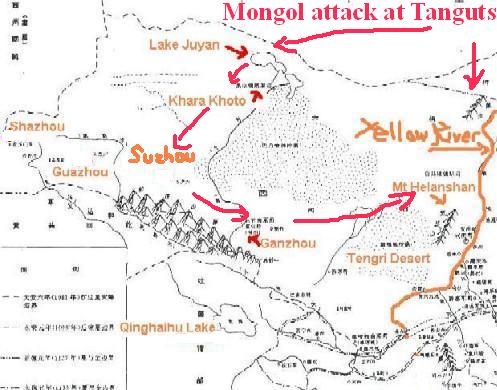
In Feb, Genghis Khan took over Heishui city [Khara Khoto], reached Mt Helanshan, caught Tangut General A-sha-gan-bu, and waited for a conversion with "western route". (A-sha-gan-bu had insulted Genghis Khan's emissary on the matter of attacking Jurchens together with Mongols.)
Mongol "western route" first attacked Shazhou by utilizing a defector Tangut general Li Qianbu. Li Qianbu and Mongol General Hudu-timur barely escaped a banquet set up by Shazhou defenders who faked a surrender. With pleading from Li Qianbu, Genghis Khan spared the city after sacking it.
Mongol "western route" then attacked Suzhou with a Tangut called Cha-han who grew up among Mongols since childhood.
Suzhou defenders killed the general who was the brother of Li Qianbu.
Mongols slaughtered the city, only sparing 106 households who were relatives of Li Qianbu.
After Suzhou would be Ganzhou whose defender was the father of Cha-han.
Tangut deputy defender killed the whole family of Cha-han's father. Mongols failed to sack Ganzhou after six attacks.
At this time, Genghis Khan led his forces to Ganzhou, and combined for an attack at Ganzhou. Ganzhou was spared slaughter with the pleading from Cha-han.
In autumn, Mongols took over Xiliang-fu when defender surrendered. Hence, the whole "Western Corridor" fell to Mongols.
In Sept, Li Quan captured Zhang Bin.
Genghis Khan then trespassed the Tengri Desert for the region called "Yellow River Nine Winding". Mongols took over Yingli, and then dispatched a contingent against Xiazhou. Mongols, with two columns, swept through the Tangut territory on the east bank of the Western Bend.
By Nov, two columns pinched Tangut Xiping-fu city.
A Xixia general, by the name of Weimingling-gong, led 100000 relief army from Zhongxing-fu, and challenged the Mongols for a battle near Helanshan Mountain. (Helan means great horse in northern dialect.) Mongols crossed the frozen Yellow River and fought Tanguts on the two banks. Xixia armies were defeated at Helanshan. Weimingling-gong retreated into Lingzhou city with remnants and converged with deposed Tangut Prince De-ren.
In Nov, Genghis Khan lay siege of Tanguts' Ling-zhou.
Mongols then sacked Lingzhou, and De-ren was killed.
Mongol armies then took over various cities including Lingzhou Prefecture, Shizhou Prefecture, and then Lintao governor office including Taohe and Xining prefectures.
Five stars, in a row, were noted in the skies. In Dec, Li Quan surrendered. Zhang Rou was conferred marshal and 'qian hu'. Ogodai lay siege of Jurchen 'nan-jing', i.e., southern capital, and dispatched Tang Qing for extracting tributes from the Jurchens.
After the Battle of Lingzhou, Mongols pushed at Zhongxing-fu the capital from Yanzhou.
In A.D. 1227, Genghis Khan attacked Tanguts' capital, and in Feb, took over Lintiao-fu. In Mar, took over Xining prefecture and Xindu-fu. In April, took over Deshun prefecture and killed 'jie-du-shi' Ai Shen and 'jin shi' Ma Jianlong.
At Deshun, Xixia General Ma Jianlong resisted the Mongols for days and personally led charges against the Mongols outside of the city gate. Ma Jianlong later died of arrow shots. Genghis Khan, after taking over Deshun, went to Liupanshan Mountain for shelter from the severe summer.
In May, Mongols dispatched Tang Qing to Jurchens again. In Jun, Jurchens sent Wanyan Hezhou for peace. Genghis Khan stated that he had said one year ago, when five stars converged onto one line, that Mongols should not kill people at random, and Genghis Khan made it a decree not to kill at random.
At Tangut capital of Zhongxing-fu, rightside prime minister Gao Lianghui defended the citywall for half a year, day in and day out, and died of illness. An earthquake struck the capital. Epidemic erupted and more than half of the citizens and soldiers caught illness.
The new Xixia emperor, i.e., Xia Modi, being attacked by the Mongols, surrendered to the Mongols by requesting for one month grace period.
Genghis Khan, deeply ill himself, nominally agreed to the surrender request but secretly ordered the slaughter of the city before his death.
In August, Xia Modi left the capital for the Mongol camp where Tu-lei killed him on the spot.
The Mongols killed the Tangut emperor and his royal family members. Pillaging erupted throughout the capital.
At the pleading of Cha-han, Mongol stopped killing, with possibly one or two out of ten inhabitants left.
The Tanguts officially surrendered in A.D. 1227, after being in existence for 190 years, from A.D. 1038 to A.D. 1227.
Death of Genghis Khan
Genghis Khan died in A.D. 1227 during his campaigns against the Tanguts. Since Western Xia had refused to provide troops in the war against the Khwarizm, and moreover, signed another alliance treaty with Jurchen Jin, Genghis Khan led a force of 180,000 troops for a new campaign against the Tanguts.
The Tanguts officially surrendered in A.D. 1227, after being in existence for 190 years, from A.D. 1038 to A.D. 1227. Meanwhile, Genghis Khan sent Ogedei eastward to attack Jurchens.
They crossed the great bend of the Yellow River and began to attack the Jurchen Jin forces. In July of this year, Genghis Khan died at age 66 somewhere near today's Liupanshan Mountain, Gansu Province, rumored to have been poisoned by his Tangut wife.
He was buried in Qinian Valley and was titled Taizu posthumously. Genghis Khan was also titled Emperor Shengwu, having a reign of 22 years and having conquered 40 countries. Tolui was made regent.
Genghis Khan, at death-bed, outlined to his youngest son, Tului, the plan for attacking the Jurchens, i.e., circumventing southward near the Soong-Jurchen border areas of Sichuan Province. Genghis Khan said the Soong Chinese would for sure acquiesce because the Jurchens were the feuds of Soong Chinese.
Ogedei's Campaigns
After the death of Genghis Khan, for the period of 1227/1229, Tolui acted as a regent. In A.D. 1228, a khuriltai was held on Kerulen River and Secret History was compiled. Khuriltai at Karakorum in 1228 selected Ogedei as khan. At the khuriltai, plans were made for campaigns against the Bulghars, Turks in the region of Kazan on the middle Volga River, and conquest of the Jurchens. By A.D. 1229, Batu Khan, son of Jochi and grandson of Genghis Khan, defeated most of the Bulghar posts. In A.D. 1229, Ogodei got enthroned according to Genghis Khan's wish. Yelü Chucai would persuade Ogedei into erecting rituals for officialdom and hiring civil officials for governance. Ogedei further devised tax laws and persuaded the Mongols into less killing for sake of more tax revenue collection from people conquered.
Ogedei declined Jurchen Jin's tributes for condoling Genghis Khan's death and declined again Jurchen Jin's tributes for congratulating Ogedei on the enthronement.
In the spring of A.D. 1230, Ogedei (i.e., Yuan Emperor Taizong posthumously) ordered a campaign against Jurchen Jin. The Mongols crossed the Yellow River into Shanxi Province, took over more than 60 towns and castles, and attacked the city of Fengxiang (which Muhuali failed to take earlier). Jurchen Jin General Wanyan Hada, fearing the Mongol army, did not go to the relief of Fengxiang which fell after a siege of 2-3 months. Wanyan Dada hid himself in Tongguan Pass. Touli then went on to attack Tongguan Pass but failed to conquer it. In A.D. 1231, Ogedei sent an expedition to defeat remaining Khitans who invaded Korea.
Circumventing Through the Han-zhong Area
A Jurchen defector general called Li Guochang proposed that Mongols march southeastward by circumventing the city of Baoji, Gansu Province, and flowed down the Han-sui River. The Mongols, passing Hanzhong, the border areas with both Soong and Jurchen Jin in eastern Sichuan Province, would defeat the Jurchens in the Hanzhong areas. Then, Mongols defeated Jurchens in the Tang-deng areas (today's Yuxian County, Henan Province).
When Mongol emissary arrived at Feizhou to borrow a path from Soong governor Zhang Xuan, Zhang Xuan killed the emissary. Ogedei then ordered Touli to march out of Baoji to take over Da'sanguan Pass. Touli took over Fengzhou Prefecture and slaughtered Yang Prefecture. Touli further sent a column into Sichuan Province by paving a road out of Guibieshan Mountain and crossing the Jialingjiang River. To avoid further confrontation with Soong Chinese, the Mongols withdrew from Soong territories and went to Han-sui River to attack the Jurchens. Wayan Hada was recalled from Tongguan to defend the Henan Province, and Wu Xian came to reinforcement, too. A Jurchen general by the name of Fengdula advised against attacking Mongols when they crossed Han-sui River halfway. Mongols under Touli, though numbering 30,000, managed to trick the Jurchen armies into thinking that they had retreated.
Mongol Campaign against the Jurchens (Battle of Yehuling, July of A.D. 1211)
Mongol Campaigns against Semiryechye & Central Asia (A.D. 1216-1219, 1219-1224)
Mongol Campaign against Kiev Rus (A.D. 1223)
Mongol Campaign against the Jurchens (A.D. 1231-1232)
Mongol Campaigns against the Volga Bulgars, Kipchaks, Alans, Rus Principalities, Crimea, Caucasus & Kiev Rus (A.D. 1237-1240)
Mongol Campaigns against Poland, Bohemia, Moravia, Hungary, Austria & Dalmatia (A.D. 1240-1242)
Mongol Campaign against Arsacia (Mulahida) from A.D. 1253 to A.D. 1256
Mongol Three-prong Campaign against Hezhou (Caaju) from late A.D. 1255 to early A.D. 1256
Mongol Continuous Campaigns in the Sichuan Basin (A.D.1257-1259)
Mongol Campaign against Hezhou (Caaju) & Diaoyucheng (A.D. 1257-1259)
Mongol Campaigns against the Abbasid Caliphate, Mecca, Misr (Egypt) Outposts, North Africa, and the Ayyubid & Mamluk Sultanates (A.D. 1257-1260)
|
|
Siege of Bianliang
The first Mongol column, under Ogedei, crossed the Yellow River at Baipo Town, Heqing County, and attacked the city of Zhengzhou. Subetei was ordered to attack Biancheng, i.e., today's Kaifeng and Jurchen's capital. Jurchens had about 40,000 men around the capital, but the city wall was 20 Chinese li in perimeter. Wanyan Hada and Fengdula were ordered to return north to guard the capital. Touli chased them with 3000 cavalry while Subetei also sent armies to attack the Jurchen relief column. At the Sanfengshan Mountain, the two Mongol columns encircled the Jurchens and defeated them by intentionally tricking them into fleeing via a trap. Jurchens fled to Junzhou Prefecture. Ogodei sent over a third column and took over the city. Wayan Hada was killed inside Junzhou, and another Jurchen general by the name of Shanhuashan came to the Mongols to die in front of Touli instead of dying among the soldiers. Fengdula was captured on the road and was killed for refusing to surrender. The Jurchen main general at Tongguan, Wayan Chongxi fled the city after hearing of Wayan Hada destruction, and his deputy general surrendered to the Mongols. Mongols went on to capture and kill Wanyan Chongxi and his families. The Mongols then attacked Luoyang. Jurchen general at Luoyang committed suicide, but the soldiers and residents managed to defeat the Mongol after a siege of three months by the Mongols.
There were less than 30,000 units of grain left, and an epidemic had already taken away 100,000 lives.
At the capital of Kaifeng, Jurchen Emperor Shouxu sent an emissary to Subetei for peace but was refused by the Mongols. The Mongols deployed hundreds of catapults ('stone cannons'). However, Kaifeng was fortified enough to withstand the cannon balls. The city was built by Posterior Zhou Emperor Shizong during the five dynasties time period. The Jurchens sent a thousand men suicide mission to attack the Mongol cannon unit. After 16 days of siege, Subetei, under order of Ogedei, agreed to peace by having a Jurchen prince sent to the Mongols as hostage. Subetei then withdrew from the Kaifeng siege and deployed armies in between the Yellow River and Luo-he River. However, about 30 Mongol emissaries for peace were killed by the Jurchen Feihu-jun (flying tiger) Column. The Mongols renewed attacks at Kaifeng. Wu Xian assembled about 100,000 soldiers and came to the relief. At this time, Ogedei got ill. According to The Secret History, Touli preyed to die on behalf of Ogedei and in A.D. 1233, Touli died.
Tolui died at a place called A-la-he-di-si.
Alternatively speaking, Tolui was poisoned to death by Ogedei while both were en route of return
to Mongolia.
In July, the Mongols sent Tang Qing to pacifying the Jurchen emperor; however, the
Jurchens killed Tang Qing and the entourage of more than thirty persons on the jia-shen day. Tang
Qing and about 30 Mongol emissaries for peace were killed by the Jurchen Feihu3-jun [flying tiger]
garrison troops in July. The Mongols renewed attacks at Kaifeng.
Back in northern China,
Subetei took charge and fought against the Jurchens to prevent the Jurchen from sending in relief to the capital city.
In late A.D.
1232, Jurchen Emperor Aizong (Wanyan Shouxu) fled the city for Gui'de-fu. Wanyan Zhongde and
his 1000-men force, who ate the wild grass and vegie to reach Bian-jing, happened to arrive at the
time Emperor Jin-ai-zong was exiting the Soong-men gate for north of the Yellow River, but failed
to persuade the Jurchen emperor from changing direction to go to Qinzhou-Gongzhou to the west.
Being chased all the way, Jurchen emperor first retreated to Gui'de in the north, and then retreated southward to Caizhou Prefecture, Henan Province.
At Kaifeng (bianliang), a Jurchen marshal by the name of Cui Li killed two generals sent by Jurchen emperor for fetching the empress and imperial family. After raping the Jurchen empress and the royal family, Cui Li surrendered Jurchen royal family to Subetei. Subetei killed the Jurchen princes and took in the women. Yelü Chucai managed to stop Ogedei from slaughtering Kaifeng which still possessed about 400,000 people. Wanyan family did not get exemption. From beginning to end, Kaifeng had undergone continuous Mongol attacks for about one year.
Cooperation With the Soong Chinese In Destroying the Jurchens
At this time, Mongols took over Luoyang. Ogedei sent an emissary to Soong Emperor Lizong, promising the land south of Yellow River in exchange for the Soong Chinese cooperation in attacking Jurchens together. Then, Ogedei ordered Tacha'erbuzhan (who took over Luoyang earlier) to attack the city of Xiangyang for sake of siege of the Jurchens at Caizhou.
Jurchens, not knowing the Mongol-Chinese alliance, sent an emissary to Soong for borrowing grains. Soong declined the request. Further, Soong sent a general with 20,000 army and 300,000 units of grains to the Mongol camp and joined the siege of Caizhou.
The Mongols declined the Jurchen's request for surrender. In A.D. 1234, under the attacks of Mongols in the north and the Chinese in the south, last Jurchen emperor committed suicide after defending the city for two months, and Jurchen Jin Dynasty ended after 120 years in history, from A.D. 1115 to A.D. 1234. Mongols and Chinese divided the bones of last Jurchen emperor (Jin Aizong) into two halves. They reached an agreement to have the northwest of Cai Prefecture as the dividing line. But half a year later, Soong Chinese went to take over Kaifeng etc., provoking Mongols into a war. An ex-Jurchen general killed Cui Li and surrendered to Soong at Kaifeng. When Soong armies, with five days of grain supply, went on to take over Luoyang, the city had only three hundred households left. Under Mongol counter-attack, Soong evacuated from Luoyang. When Mongols flooded Kaifeng with water from Yellow River, Soong armies fled south.
|
|
|
|
|
|
|
Sovereigns & Thearchs;
Xia-Shang-Zhou dynasties;
Zhou dynasty's vassalage lords;
Lu Principality lords;
Han dynasty's reign years
(Sexagenary year conversion table-2698B.C.-A.D.2018; 247B.C.-A.D.85)
|
|
The Sinitic Civilization - Book I is
available now on
iUniverse,
Barnes & Noble,
Amazon,
Google Play|Books
and
Nook.
The Sinitic Civilization - Book II is
available at
iUniverse,
Amazon and Barnes & Noble.
Check out the 2nd edition preface that realigned the Han dynasty's reign years strictly observing the Zhuanxu-li calendar of October of a prior lunar year to September of the following lunar year, and the 3rd edition introduction that had an overview of Sinitic China's divinatory history of 8000 years.
The 2nd edition preface had an overview of the epact adjustment of the quarter remainder calendars of the Qin and Han dynasties, and the 3rd edition introduction had an overview of Sinitic China's divinatory history of 8000 years.
The 2nd edition realigned the Han dynasty's reign years strictly observing the Zhuanxu-li calendar of October of a prior lunar year to September of the following lunar year.
Stayed tuned for Book III that is to cover the years of A.D. 86-1279, i.e., the Mongol conquest of China, that caused a loss of 80% of China's population and broke the Sinitic nation's spine.
Preview of annalistic histories of the Sui and Tang dynasties, the
Five Dynasties, and the two Soong dynasties
could be seen in
From the Khitans to the Jurchens & Mongols: A History of Barbarians in Triangle Wars and Quartet Conflicts
(The Barbarians' Tetralogy - Book III: available at iUniverse;
Google Play|Books;
Amazon;
B&N).
(A final update of the civilization series is scheduled for October of 2022, that would put back the table of the Lu Principality ruling lords' reign years, that was inadvertently dropped from Book I during the 2nd update.)
|
|
 Now, the Scourge-of-God-Tetralogy.
Book III of
The Barbarian Tetralogy, i.e., this webmaster's barbarism series, is released in October of 2022 by iUniverse. This barbarism series would be divided into four volumes covering the Huns, the Xianbei, the Turks, the Uygurs, the Khitans, the Tanguts, the Jurchens, the Mongols and the Manchus.
Book I of the tetralogy would extract the contents on the Huns from
The Sinitic Civilization-Book II,
which rectified the Han dynasty founder-emperor's war with the Huns on mount Baideng-shan to A.D. 201 in observance of the Qin-Han dynasties' Zhuanxu-li calendar.
Book II of the Tetralogy would cover the Turks and Uygurs.
And
Book IV would be about the Manchu conquest of China.
Now, the Scourge-of-God-Tetralogy.
Book III of
The Barbarian Tetralogy, i.e., this webmaster's barbarism series, is released in October of 2022 by iUniverse. This barbarism series would be divided into four volumes covering the Huns, the Xianbei, the Turks, the Uygurs, the Khitans, the Tanguts, the Jurchens, the Mongols and the Manchus.
Book I of the tetralogy would extract the contents on the Huns from
The Sinitic Civilization-Book II,
which rectified the Han dynasty founder-emperor's war with the Huns on mount Baideng-shan to A.D. 201 in observance of the Qin-Han dynasties' Zhuanxu-li calendar.
Book II of the Tetralogy would cover the Turks and Uygurs.
And
Book IV would be about the Manchu conquest of China.
From the Khitans to the Jurchens & Mongols: A History of Barbarians in Triangle Wars and Quartet Conflicts
, i.e., Book III of
the Scourge-of-God-Tetralogy,
focused on the Khitans, Jurchens and Mongols, with the missing one-year history of the Mongols' Central Asia campaigns rectified.
This webmaster, other than the contribution to the Sinology studies in rectifying the Huns' war to 201 B.C., and realigned the missing one-year history of the Mongol Central Asia war, had one more important accomplishment, i.e., the correction of one year error in the Zhou dynasty's interregnum (841-828 B.C. per Shi-ji/840-827 per Zhang Wenyu) in
The Sinitic Civilization-Book I, a cornerstone of China's dynastic history.
|
The Scourges of God: A Debunked History of the Barbarians (available at iUniverse|Google Play|Google Books|Amazon|B&N)
From the Khitans to the Jurchens & Mongols: A History of Barbarians in Triangle Wars and Quartet Conflicts
(The Barbarians' Tetralogy - Book III)
Epigraph,
Preface,
Introduction,
Table of Contents,
Afterword,
Bibliography,
References,
Index
|
|
Written by Ah Xiang
|
|

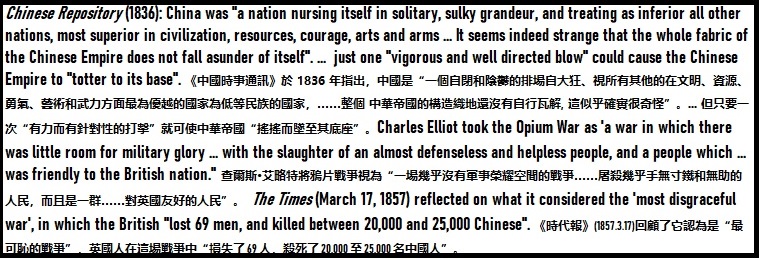
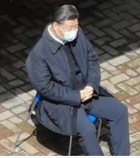








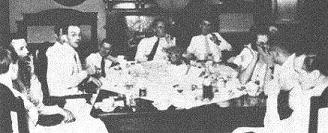
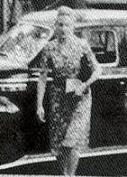
![Though, Anna Wang [Anneliese Martens], in her memoirs, expressed jealousy over Gong Peng by stating that the Anglo-American reporters had flattered the Chinese communists and the communist movement as a result of being entranced with the goldfish-eye'ed personal assistant of Zhou Enlai](GongPeng.jpg)








